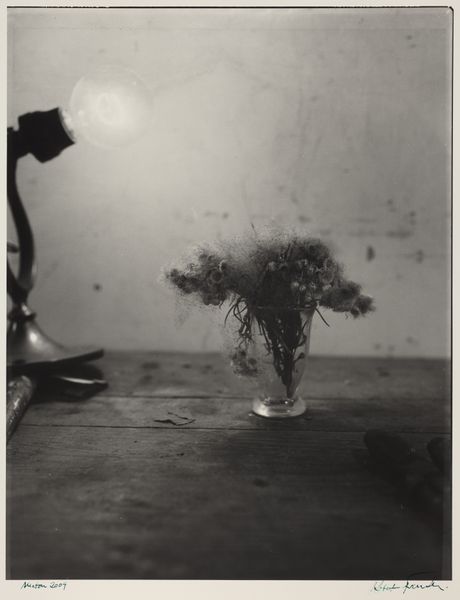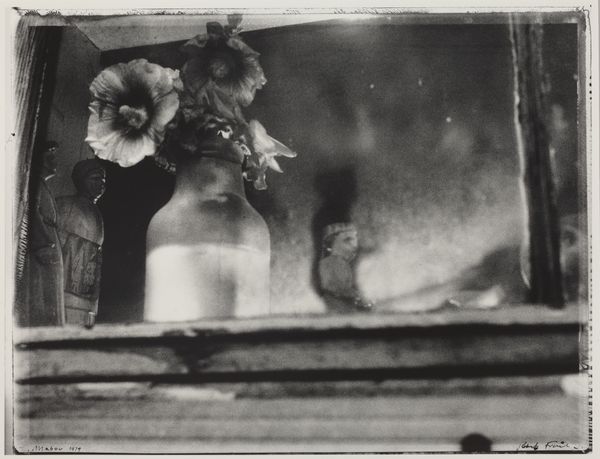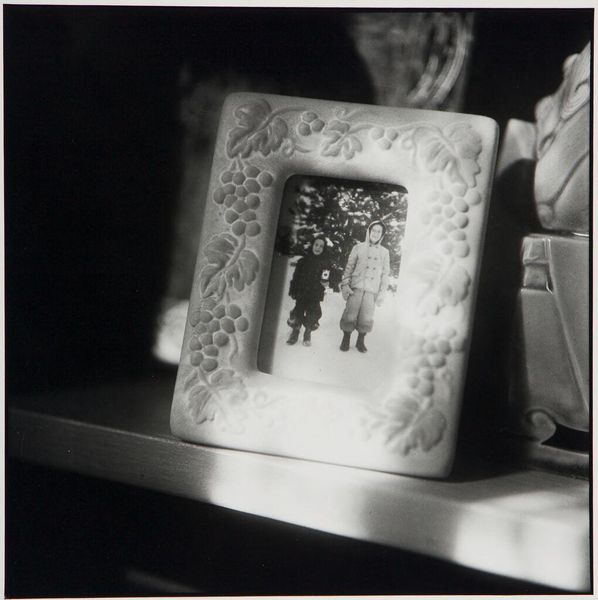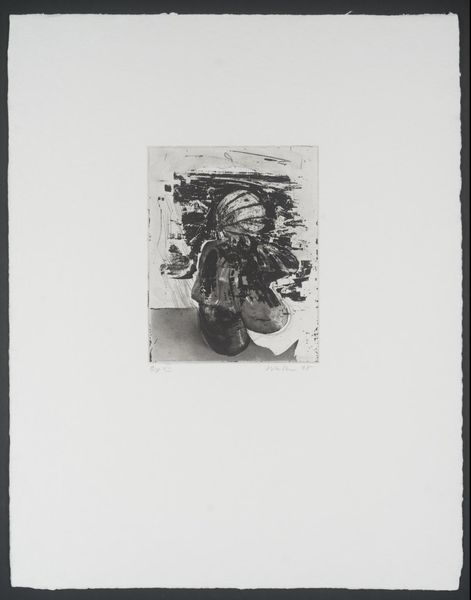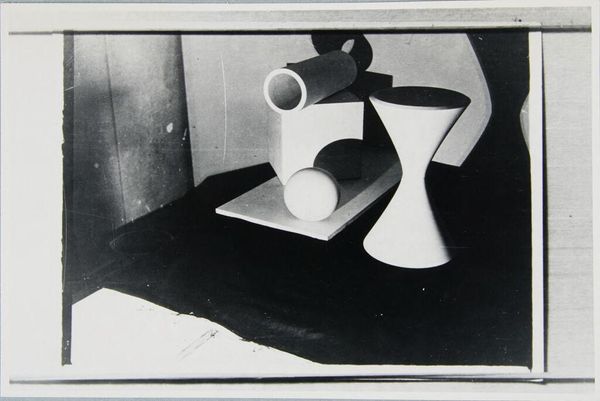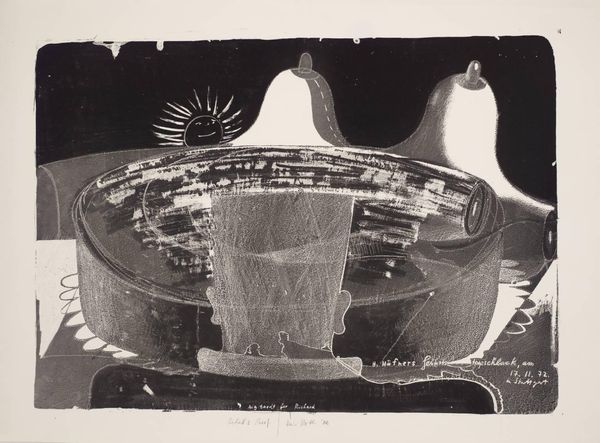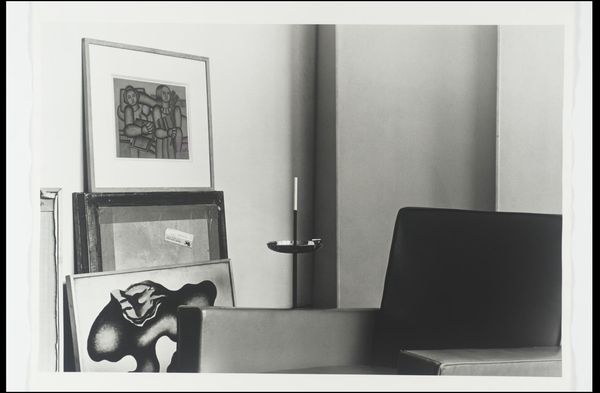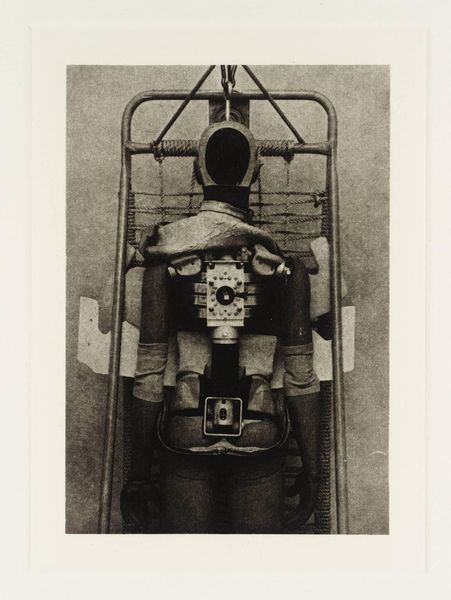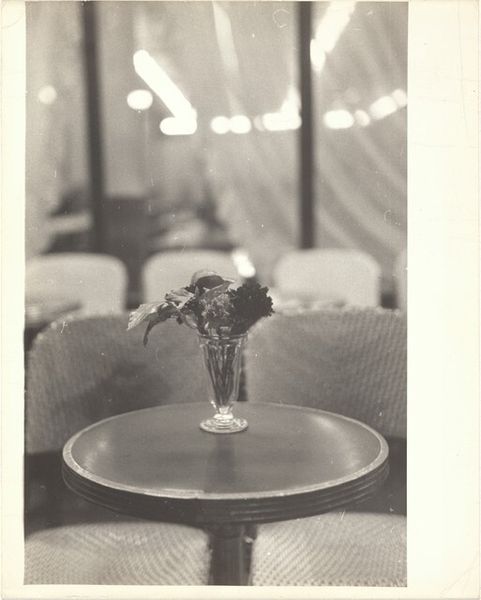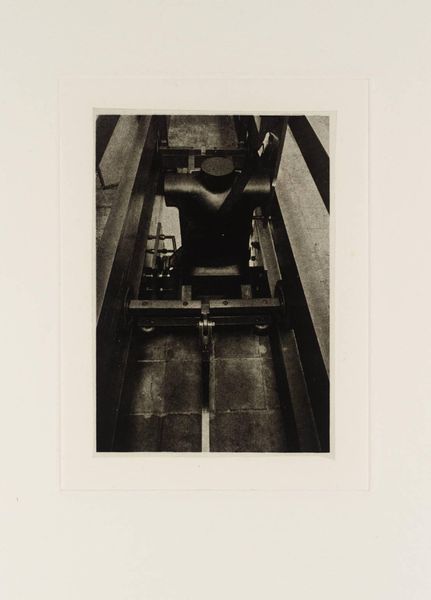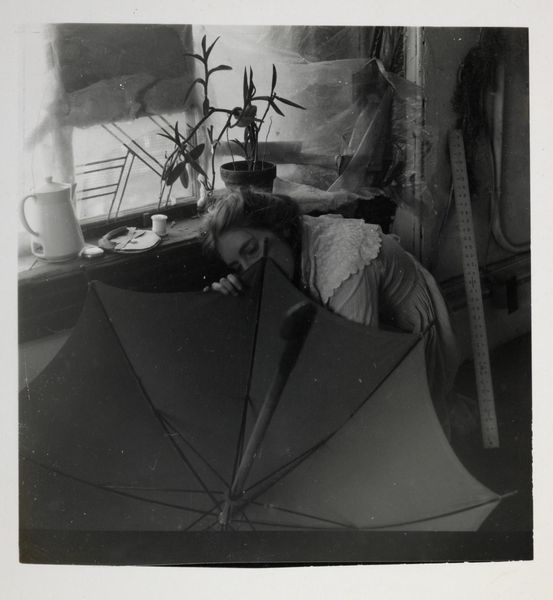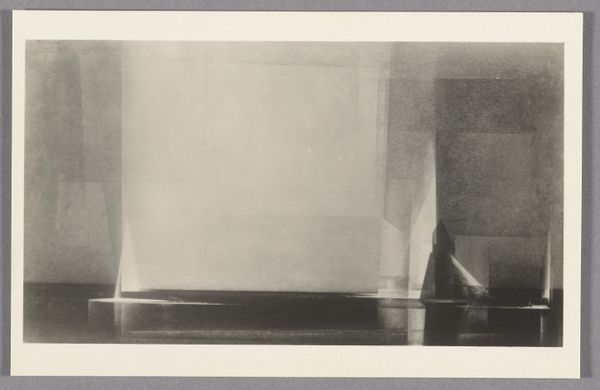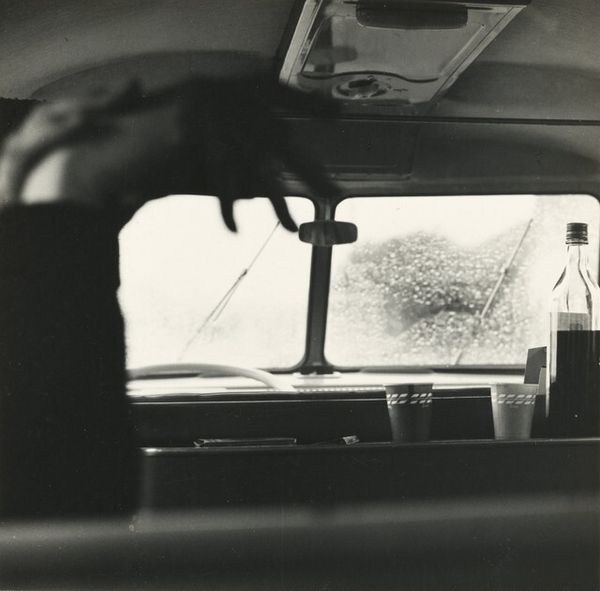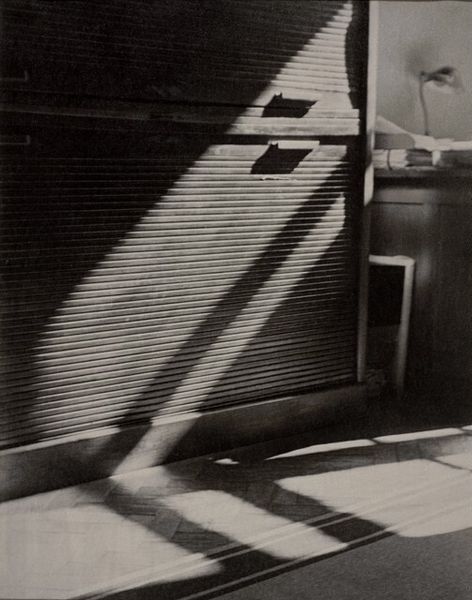
Dimensions: image: 29.8 x 44.7 cm (11 3/4 x 17 5/8 in.) sheet: 40.7 x 50.7 cm (16 x 19 15/16 in.)
Copyright: National Gallery of Art: CC0 1.0
Editor: Robert Frank's "Teardrops, New Jersey," a gelatin silver print from 1960, offers a quiet glimpse inside an American diner. There's a stark, almost melancholy feeling that pervades the scene, especially with that blurred car outside. What do you see in this piece? Curator: I see a carefully constructed commentary on American life, capturing a particular cultural moment. Frank was an outsider, a Swiss immigrant, and his gaze revealed social tensions beneath the surface of postwar prosperity. The diner, the car, the jukebox—all iconic symbols, yet rendered with a gritty realism that disrupts the idealized image. Consider the title itself, "Teardrops"; it hints at the undercurrent of sadness or disillusionment that Frank perceived in this environment. How do you think this differs from typical commercial photography of the time? Editor: It's less polished, definitely, more raw. Commercial photos usually try to sell an idealized version of reality, but this feels…truer. I also see how that car outside is blurred, which kind of suggests how all these cultural moments blur with time. Curator: Exactly! Frank's work often challenged the pervasive optimism that saturated popular media, presenting a more complex and at times critical view of American society. This subversion, fueled by his outsider perspective, significantly influenced how photographers approached documenting social realities. The placement of the objects and subjects helps guide us toward deeper readings of American cultural codes, especially race, class and representation in public life. Do you think this picture achieves its intent or if not what would you add to it to strengthen its message? Editor: That’s a difficult question because what he’s doing by stripping the photograph down like this – with this casual yet potent aesthetic – helps showcase how these moments of truth exist. Maybe more diverse figures can broaden it more? Curator: True. However, his choices helped pave the way for a more nuanced representation within documentary photography, sparking important conversations about social dynamics. Frank reminds us how photography not only shows us something, but is embedded within layers of ideology, which affect who gets to see the world in that particular way. Editor: This conversation makes me appreciate the photograph's layered meanings, especially how Robert Frank leveraged social critique through mundane imagery. Curator: Precisely; and his choice of realism is in itself a bold commentary on how to disrupt what he observed as flawed portrayals in America.
Comments
No comments
Be the first to comment and join the conversation on the ultimate creative platform.
